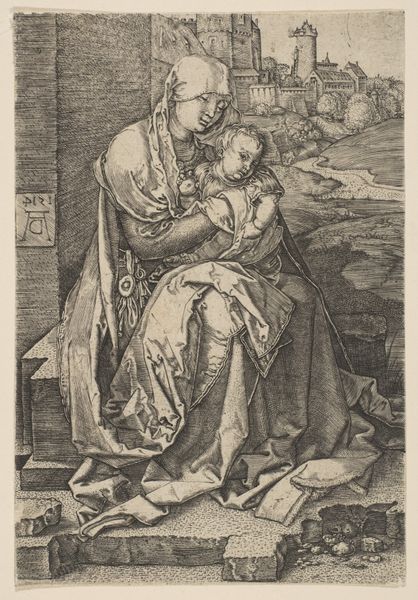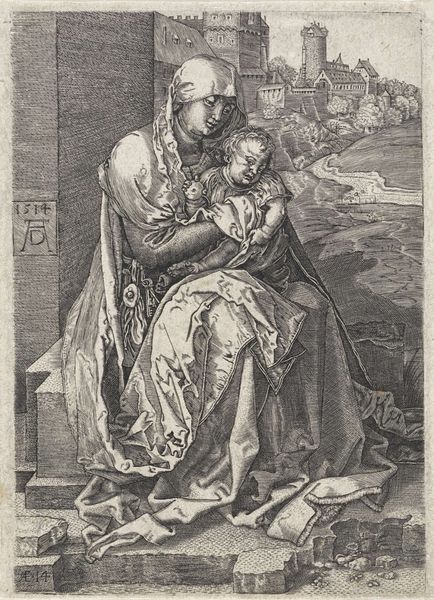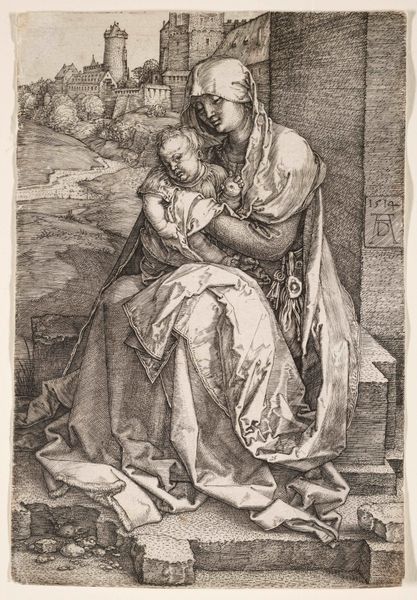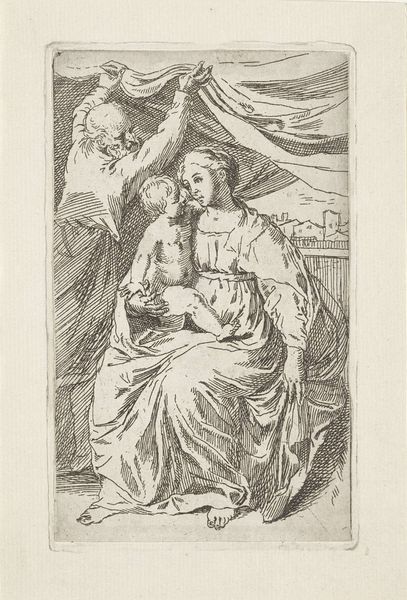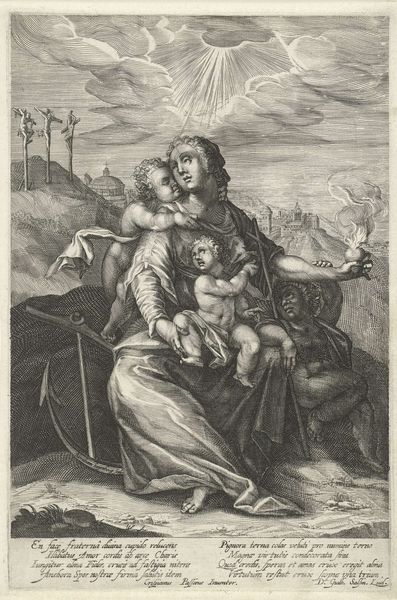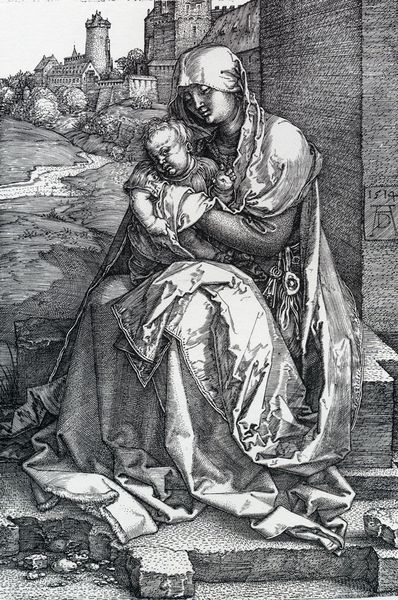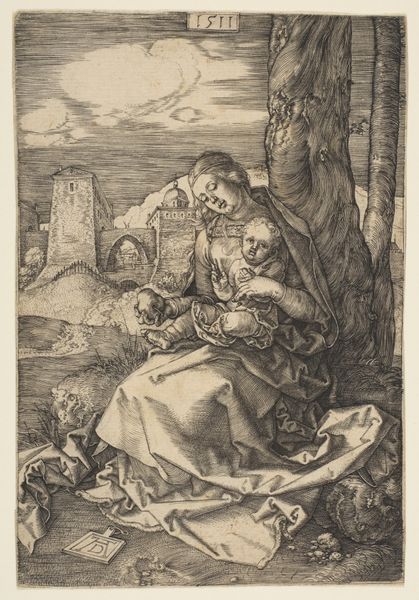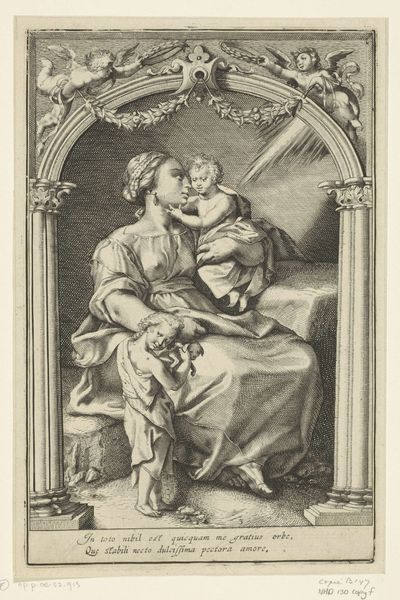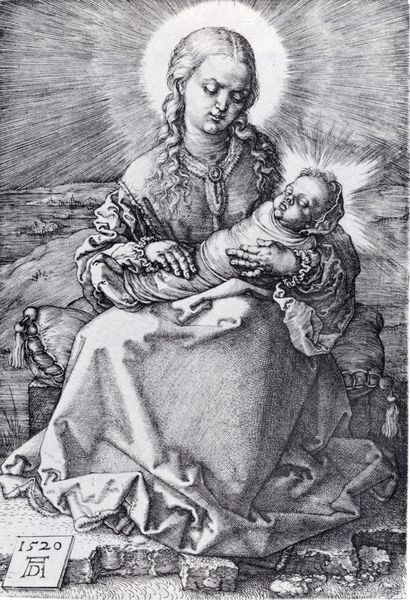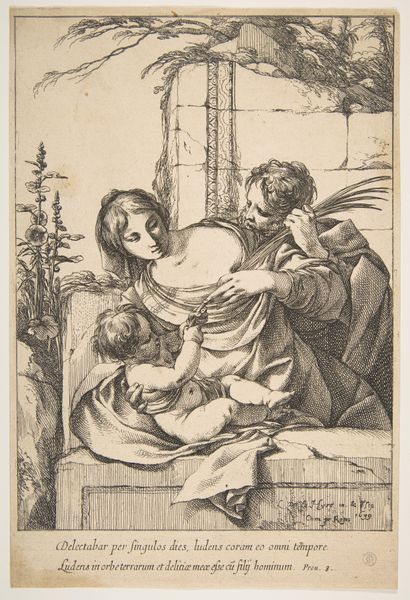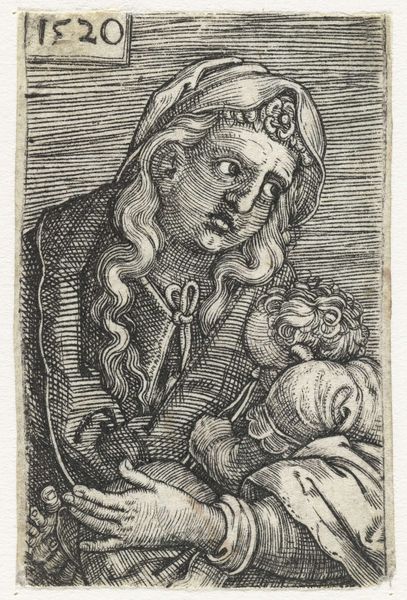
print, engraving
#
portrait
#
medieval
# print
#
landscape
#
river
#
figuration
#
history-painting
#
engraving
Dimensions: height 130 mm, width 89 mm
Copyright: Rijks Museum: Open Domain
Curator: Here we have "Maria met het Christuskind op schoot bij een muur," or "Mary with the Christ Child on her lap by a wall," an engraving made before 1619 by Wierix, and part of the collection here at the Rijksmuseum. Editor: My immediate impression is one of somber domesticity. The use of such detailed lines for an engraving conveys a surprising sense of texture. It is intimate, despite the rather grand backdrop. Curator: Indeed, Wierix situates the Madonna and Child not just within a religious context, but a worldly one too. The print comes from a period where the role of women, particularly in the domestic sphere, was being redefined both through religious doctrine and evolving social norms. Note her subdued expression— a reflection, perhaps, of the expectations placed upon women to embody piety and humility. Editor: Look at the folds in her robe! Semiotics allow us to understand the symbolic communication of these visual components, and the folds upon folds here act as symbolic shelter and an implication of movement. See how Wierix’s engraving emphasizes certain areas using denser cross-hatching to enhance this aspect. It’s almost tactile, offering a visual depth. Curator: Absolutely, and this adds to the piece's overall message. We also cannot separate this from its historical context, a time rife with religious and political upheaval. Wierix, creating during the Counter-Reformation, likely intended to present an image of quiet resilience, celebrating the central role of women in Christian faith and community within an increasingly contested social fabric. Editor: That brings me to how Wierix arranges foreground and background. The Madonna and Child take up the majority of the visual space, creating visual weight. In the background, it feels light, airy almost; while she appears bound. Wierix effectively plays with depth here to evoke emotions related to being contained. Curator: It’s interesting how Wierix is using conventional religious imagery to reinforce and question women’s agency within the shifting structures of early modern society. This is also related to how women historically have been portrayed: always madonna or whore. This engraving definitely emphasizes the role as a doting mother while almost simultaneously portraying her restraint. Editor: I agree; focusing solely on its religious connotations does a disservice to Wierix’s engraving. It's fascinating to dissect how these formal elements affect how we understand the relationship of mother and child in this piece. Curator: A conversation for us to further explore, I think.
Comments
No comments
Be the first to comment and join the conversation on the ultimate creative platform.
